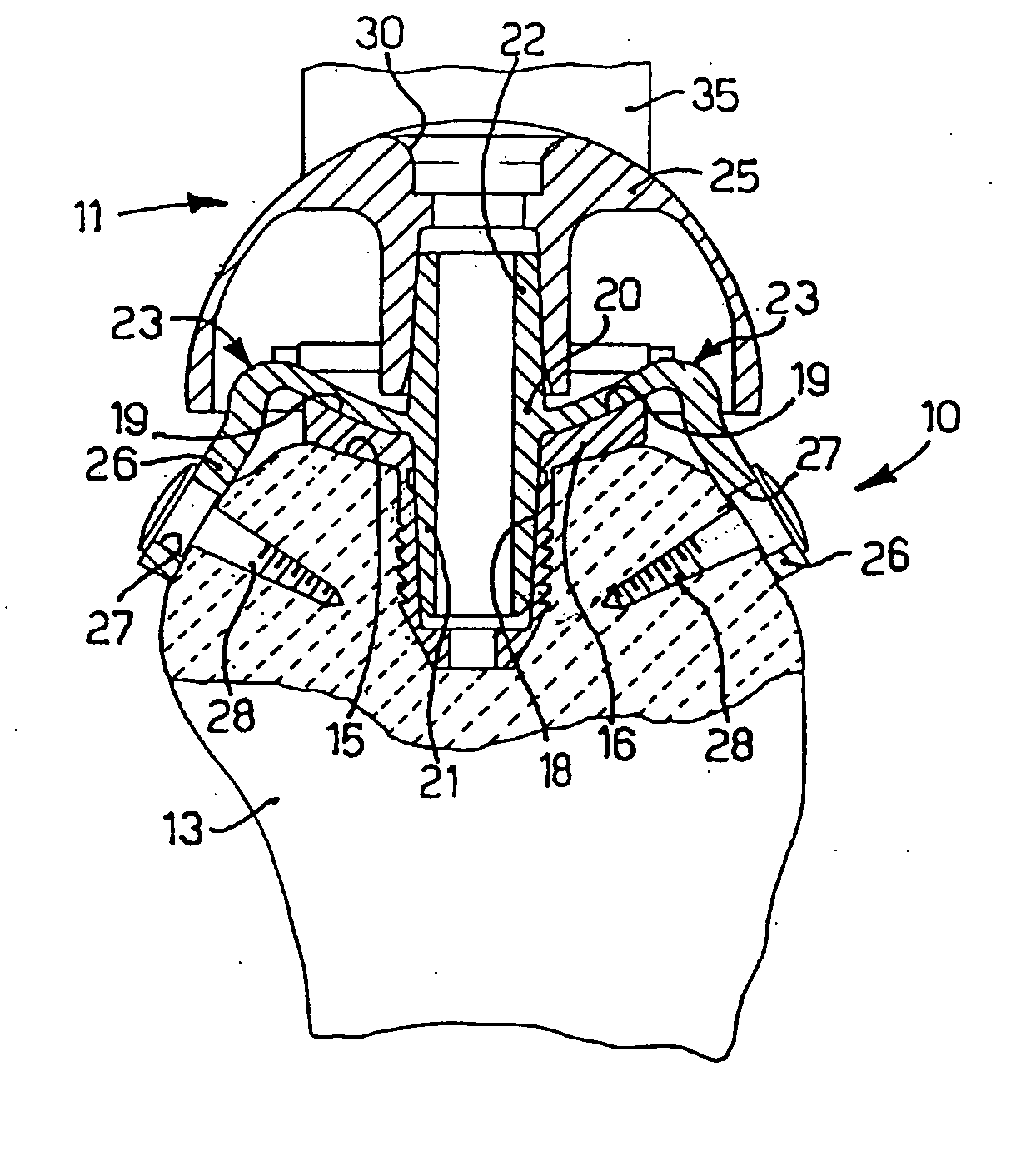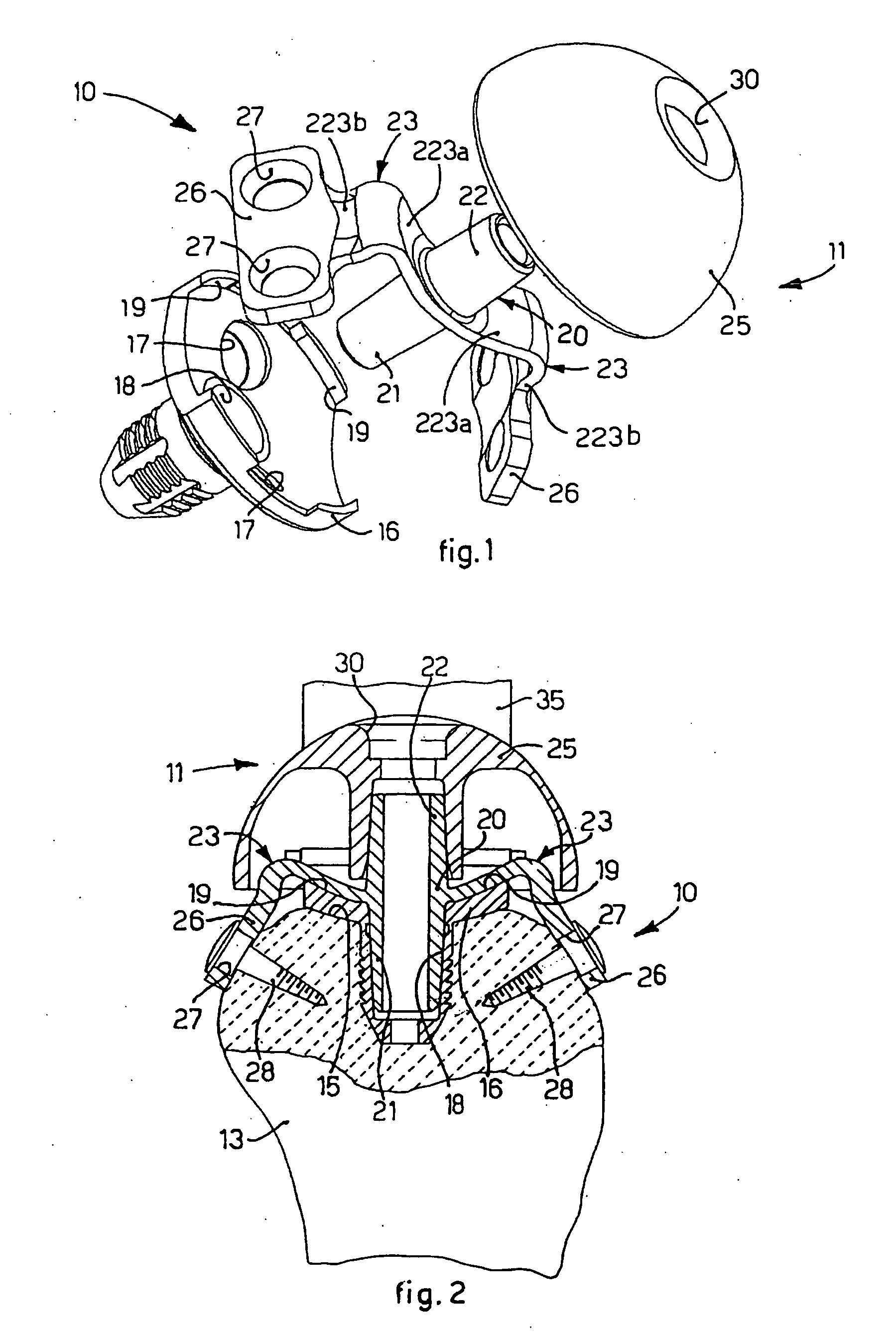Attachment element for a prosthesis for the articulation of the shoulder
a technology for articulating prostheses and attachment elements, which is applied in the field of attachment elements, can solve the problems of not always being able to guarantee the correct and enduring not providing a solution for improving the attachment conditions of the prosthesis, and not always being able to ensure the correct and lasting attachment of the support, etc., to achieve the effect of simple and economical, not affecting the correct functioning of the prosthesis, and being easy to position and assembl
- Summary
- Abstract
- Description
- Claims
- Application Information
AI Technical Summary
Benefits of technology
Problems solved by technology
Method used
Image
Examples
Embodiment Construction
[0038] With reference to FIGS. 1 and 2, an attachment element 10 according to the present invention is associated with an inverse prosthesis 11 implanted in a shoulder.
[0039] To be more exact, the inverse prosthesis 11 allows the articulation of a humerus, not shown, in a relative glenoid cavity 15 of a scapula 13, and comprises, on the side of the scapula 13, a metal support 16 inserted, for example by pressure, in a seating made in the glenoid cavity 15 and attached to the latter by means of central screws, not shown and of the traditional type, housed in corresponding holes 17.
[0040] The attachment element 10 according to the present invention comprises, in the solution shown here, a central metal pin 20 and lateral fins 23, in this case two, disposed radially at 180° with respect to the central pin 20.
[0041] Each lateral fin 23 comprises a first segment 223a which extends in a substantially radial direction from the central pin 20, and a second segment 223b which is angled, i...
PUM
 Login to View More
Login to View More Abstract
Description
Claims
Application Information
 Login to View More
Login to View More - R&D
- Intellectual Property
- Life Sciences
- Materials
- Tech Scout
- Unparalleled Data Quality
- Higher Quality Content
- 60% Fewer Hallucinations
Browse by: Latest US Patents, China's latest patents, Technical Efficacy Thesaurus, Application Domain, Technology Topic, Popular Technical Reports.
© 2025 PatSnap. All rights reserved.Legal|Privacy policy|Modern Slavery Act Transparency Statement|Sitemap|About US| Contact US: help@patsnap.com



